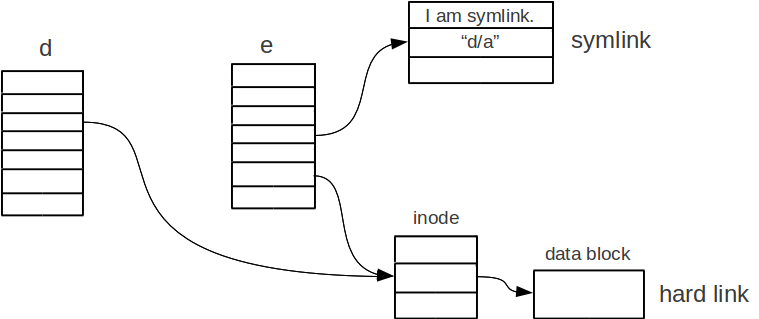
- #SYMBOLIC LINKER OS10.9.5 HOW TO#
- #SYMBOLIC LINKER OS10.9.5 FOR MAC OS X#
- #SYMBOLIC LINKER OS10.9.5 FOR MAC OS#
- #SYMBOLIC LINKER OS10.9.5 INSTALL#
- #SYMBOLIC LINKER OS10.9.5 PASSWORD#
There are some additional instructions that may help resolve your issues.
#SYMBOLIC LINKER OS10.9.5 FOR MAC OS#
In that case, the easiest thing to do is go to the installation HOWTO at the link at the end of this video and check out the last section of the instructions for the installation for Mac OS 10.9 or 10.10. If your compilers are not installed, you may need to add the installation location to the PATH environment variable, which tells the computer where to look for command line programs. If they return the compiler versions as expected, you’re all set. You can try the same with the Fortran compiler by typing gfortran -v. Step 5: Now the compilers are installed, and if you’re running Mac OS 10.11, you should be able to test the installation by typing gcc -v.
#SYMBOLIC LINKER OS10.9.5 INSTALL#
This should take just a moment and will install the compilers in /usr/local. tar.gz, you’ll need to add z to the list of flags after the tar command. Using the sudo command can do major damage to your computer if you aren’t careful, so please type the following exactly as shown to do the install: sudo tar -xvf -C /. We’ll install the compilers now using the ` sudo` command, and before we do so, I’m going to give you a little warning. Step 4: After the compilers have downloaded, we can return to the Terminal and navigate to the Downloads directory. On that page, we’ll grab the latest STABLE version of the GCC compiler package and click the link to download. And type in "High-performance computing Mac OS X" in the Google search. The easiest way to get there is to open a web browser, Safari in this case.
#SYMBOLIC LINKER OS10.9.5 FOR MAC OS X#
Step 3: Now that Xcode is fully installed, we can move on to downloading the GNU compilers from the High-Performance Computing for Mac OS X website. This may include asking you for your password.

This will install the command line tools for Xcode, and you will be asked to perform the install using the typical application installation process. If not, you should still be able to do the install by following these instructions carefully. Once Terminal has opened, type in xcode-select -install. If you’re installing compilers, I am going to assume you’re at least somewhat familiar with using a terminal emulator. To do this, we can use Spotlight to open the Terminal app. Step 2: Xcode has been downloaded and installed, and now we can move on to a critical second step for the Xcode install, installing the command line tools. I’ll be back once the install is complete. Xcode is a pretty big download, so depending on the speed of your internet connection it may take some time to download and install.
#SYMBOLIC LINKER OS10.9.5 PASSWORD#
You may be prompted to enter your Apple ID and password if you’ve not previously installed applications via the App Store. You can now click install to install Xcode.

To install Xcode, start by opening the App Store app by clicking on the Apple logo on the top left of the menu bar and then selecting App Store… Once the App Store app opens, enter "Xcode" into the search and press Enter. Step 1: We’ll begin by installing the current version of Apple’s Xcode software, Xcode 7. If you’re running an older version of Mac OS X, the installation procedure will be similar, but you can check out the link at the end of this video for the installation procedure on older versions of Mac OS X back to 10.6. I am also assuming you have administrator access on your Mac, allowing you to install software.
#SYMBOLIC LINKER OS10.9.5 HOW TO#
In this video, I will show you how to install the compilers as well as Apple’s Xcode software, which is required for the compiler installation. For this video, I am assuming you are using a Mac running Mac OS 10.11, also known as El Capitan, that you have an Apple App Store account and that you have internet access. Hello, and welcome to this screencast on how to install the GNU C, C++ and Fortran compilers for Mac OS 10.11 (El Capitan). Video instructions for Mac OS 10.11 (El Capitan) with Xcode 7 If you are using Mac OS X 10.6 - 10.10, check out the instructions for older versions of Mac OS X.

To install the GNU compilers as described in this HOWTO, you'll need the following: Note that you'll need to follow the instructions on this page prior to installing Open MPI if you don't already have some set of compilers installed. If you have a multi-core Mac (most should by now) and would like to run codes that use MPI to distribute processing across multiple processor cores, you should also check out the HOWTO for installing Open MPI on Mac OS X. This means that using command line utilities such as compilers is straightforward, making coding on your Mac easy. One of the nice things about Mac OS X is that you have a polished user interface atop a Unix operating system. This HOWTO will guide you through the installation of the GNU C, C++ and Fortran compilers on Mac OS X.


 0 kommentar(er)
0 kommentar(er)
